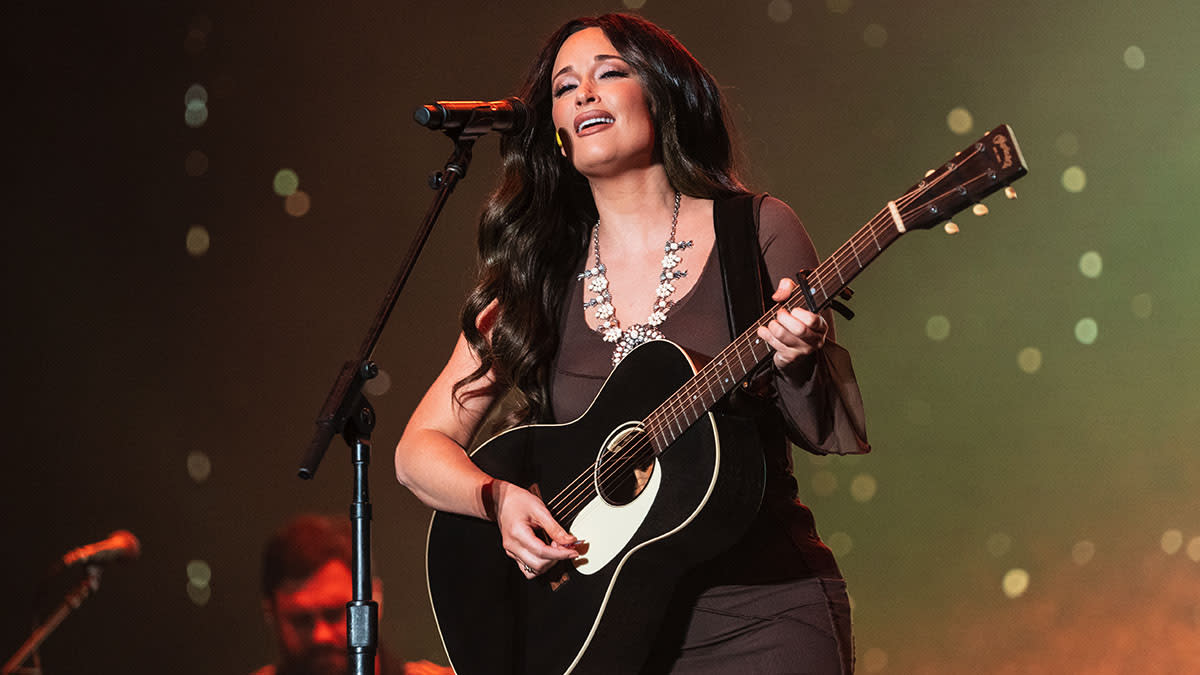She's a Grammy winner who's been writing songs since she was 8, but Kacey Musgraves also has a fingerstyle approach that will give your acoustic playing a real identity

- Oops!Something went wrong.Please try again later.
A big star on the modern country scene, Kacey Musgraves was born in Golden, Texas on August 21st 1988. A six-time Grammy winner, music has been a part of her life from a young age.
She began songwriting aged eight, took up mandolin soon after with guitar coming into her life when she was 12. Remarkably, she self-released her first album when she was just 14 years old and at 19 appeared on the reality TV show Nashville Star.
By 2008 she had been discovered and signed to independent label Triple Pop which gave her a platform to release her music and led to widespread discovery and a quick-growing fanbase.
A heavy touring schedule followed, and she was soon on the road with A-list acts Lady A, Katy Perry, Willie Nelson and more. Soon she was making TV appearances on the major networks and collaborating with country stars Miranda Lambert and the Zac Brown Band in addition to releasing solo albums.
Musgraves has a wide array of influences and you can discern all of these in her guitar style which is classic country accompaniment with added melodic elements. She cites Alison Krauss and John Prine as being her main influences, but her sound has also been shaped by country music legends Lee Ann Womack, Dolly Parton and Marty Robbins, and studio legend turned troubadour Glen Campbell.
Musgraves uses the guitar as a back-up to her vocals and songwriting, and she is joined in the studio by various session wizards. The guitar parts on her tracks are often layered up, so it’s not always easy to know who is playing what. However, thanks to the marvel of online live footage, it’s easy to get a handle on how she plays and she both strums and fingerpicks.
Sometimes her parts are simple open chords while at others she adds melodic interest to the parts she’s playing, and that’s what we’ll focus on here. This is a classic way of writing modern country, where you take a simple motif – in this case, the hammer-on on the fourth string – and then move the chord progression around it. The end result is a really melodic part that goes beyond simple chord strumming to have a real identity.
Additionally, you’ll often see Musgraves using a capo on the higher frets, which is obviously to help with her vocal register but it’s also a great writing tool as these types of part start to sound far sweeter and less muddy when you take them from the open position and place them higher on the neck.
Get the tone
Amp Settings: Gain 3, Bass 7, Middle 6, Treble 7, Reverb 2
Musgraves predominantly plays a Martin 00L-17 and a 1957 Gibson J-45, the former a smaller-bodied acoustic guitar (in our pic) and the latter larger. Any body size is fine for this type of playing, but use fresh acoustic guitar strings to keep the tone nice and bright. Use the above settings if playing through an amp. I used a Martin Custom Authentic 1937 D-28, dreadnought.
Playing notes and tab
[Bars 1-16] Use your fourth finger for the hammer-ons on the fourth string, even though it requires quite a lot of impact for this finger to sound the note. The up-side of employing this digit is that you can make the chord shapes more easily, so it’s well worth persevering.
Remember, too, that the capo at the 5th fret will take the string action right down, making the hammer-on much easier than if it were in the open position (the smaller fret spaces here help, too).
[Bars 17-32] Musgraves likes to add colour to her chords, particularly the Dadd11 shape (Gadd11 with a 5th fret capo) – see bar 20. In reality, this is an open-position C major chord moved up two frets with the added character of the open third string. Common shapes moved up the neck are great refreshers!

